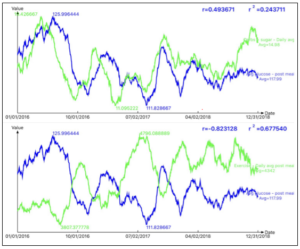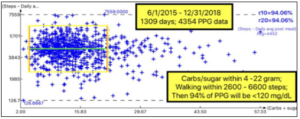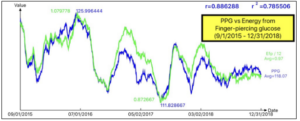Publication Information
ISSN: 2641-6816
Frequency: Continuous
Format: PDF and HTML
Versions: Online (Open Access)
Year first Published: 2018
Language: English
| Journal Menu |
| Editorial Board |
| Reviewer Board |
| Articles |
| Open Access |
| Special Issue Proposals |
| Guidelines for Authors |
| Guidelines for Editors |
| Guidelines for Reviewers |
| Membership |
| Fee and Guidelines |
 |
Using GH-Method: Math-Physical Medicine and Energy Theory to Re-Examine the Relationship with Food, Exercise, and Postprandial Plasma Glucose
Gerald C Hsu*
eclaireMD Foundation, USA
Received Date: April 03, 2020; Accepted Date: April 15, 2020; Published Date: April 24, 2020
*Corresponding Author: Gerald C Hsu, eclaireMD Foundation, USA. Tel: +15103315000; E-mail: g.hsu@eclairemd.com
Citation: Hsu GC (2020) Using GH-Method: Math-Physical Medicine and Energy Theory to Re-Examine the Relationship with Food, Exercise, and Postprandial Plasma Glucose. Adv Nutri and Food Sci: ANAFS-178.
Abstract
The author developed his GH-Method: math-physical medicine by applying mathematics, physics, engineering modeling, and computer science (big data analytics and AI) to derive the mathematical metabolism. He has collected and processed approximately 1.5 million data, while researching medical conditions and lifestyle details. The dataset is provided by the author, who uses his own type 2 diabetes metabolic conditions control, as a case study via the “math-physical medicine” approach of a non-traditional methodology in medical research.
Math-Physical Medicine (MPM) starts with the observation of the human body’s physical phenomena (not biological or chemical characteristics), collecting elements of the disease related data (preferring big data), utilizing applicable engineering modeling techniques, developing appropriate mathematical equations (not just statistical analysis), and finally predicting the direction of the development and control mechanism of the disease.
Keywords: Artificial Intelligence; Chronic Diseases; Exercise; Food; Lifestyle Data; Math-Physical Medicine; Metabolic Conditions; Metabolism; Postprandial Plasma Glucose; Type 2 Diabetes
Introduction
The author has spent eight years collecting and processing ~ 1.5 million data and researching medical conditions and lifestyle details on a patient (himself) with three chronic diseases such as hyperlipidemia, type 2 diabetes (T2D), and hypertension. The same individual suffered five cardiac episodes from 1994 through 2006. The author is a research scientist in the field of endocrinology, diabetes, and metabolic disorders. He applied his knowledge from advanced mathematics, physics concepts, engineering modeling, and computer science tools to re-examine the relationship with food, exercise, and postprandial plasma glucose (PPG) for one particular T2D patient, himself.
Methods
The focus of this paper is to apply energy theory specifically from physics and engineering on medicine. He used both optical physics and signal wave processing to develop his PPG prediction model. He realized that weight is merely a physical representation of internal energy exchange in the human body. The energy infusion includes food and others, whereas energy diffusion comprises of exercise/activity and others. The major goal is to avoid having energy imbalance known as disequilibrium; otherwise, the excessive (left-over) energy will circulate within the blood glucose to damage one’s internal organs.
The food/meal database contains ~8 million, while the patient’s metabolism data is ~1.5 million.
Results
The 4,354 food/meals (3,927 meals and 427 snacks) in the selected period of 1,309 days (6/1/2015 - 12/31/2018) indicate the average values for daily glucose as 118.4 mg/dL and daily carbs/sugar intake as 15 grams per meal. After consuming carbs/sugar in the range of 2 to 22 grams, he walked 2,600 to 6,600 steps after each meal. The results showed that 94% of his total 3,927 PPG values would be lower than 120 mg/dL (Figure 1).


Figure 1: PPG vs. Carbs/Sugar intake (49% correlation); PPG vs. post-meal walking (-82%); Spatial analysis.
Furthermore, by applying energy theory, he found a “preliminary” glucose-energy perturbation range of -13% to +8% resulting from left-over energy (Figure 2). In order to further narrow down the variance, he identified a few practical methods to improve both food intake and exercise in order to “wear-off” the excessive left-over energy.

Figure 2: PPG vs. Energy generated from daily glucose (finger-piercing).
Conclusion
The author did not discover any major new findings during this research process. However, he adjusted some practical methods regarding the control of energy infusion through food intake and energy consumption by post-meal walking. Therefore, this set of practical tips can guide T2D patients to further improve their PPG conditions.